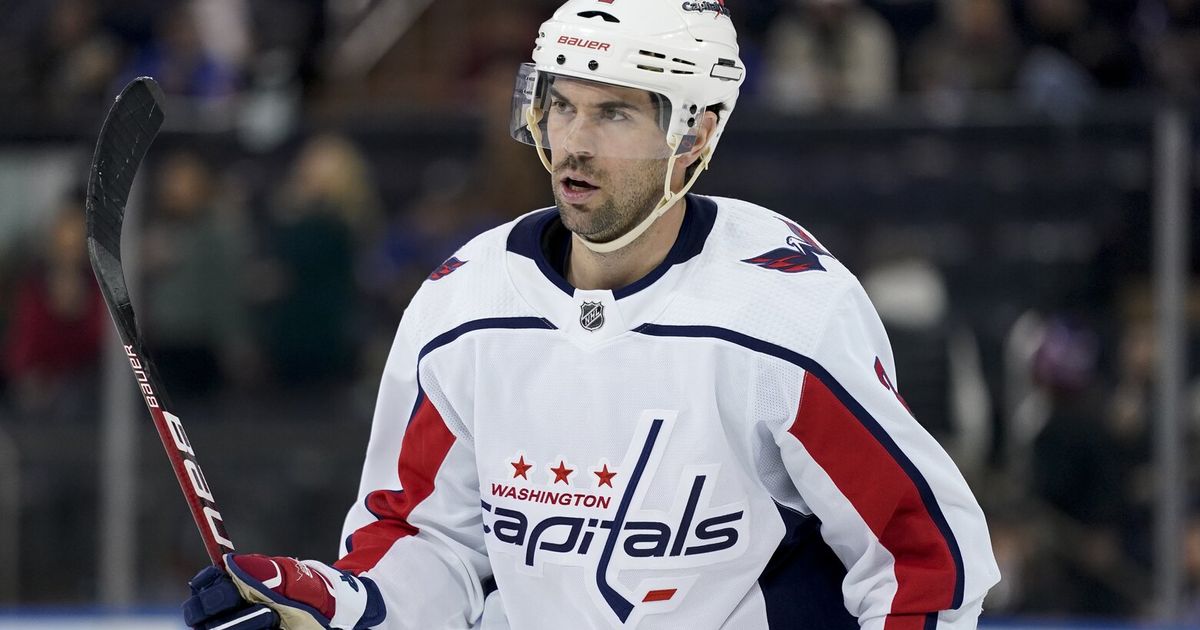
Sprucing up the defensive corps wasn’t exactly topping the Kraken’s summer priority list.
The team’s inaugural blue line provided general manager Ron Francis and company a rare respite from criticism of their July 2021 expansion draft choices. It also netted some of the Kraken’s better trade returns when defensemen Mark Giordano and Jeremy Lauzon were dealt at the March 2022 deadline for future second-round draft picks.
But beyond steady statistics notched in traditional and more advanced analytical categories, it was murmured that the unit could be quicker at moving the puck out of their zone and into the opposition end to help beleaguered goaltenders and goal scorers, particularly on the power play. Enter Justin Schultz, 32, a veteran, right-handed shot defender signed as a free agent in July for two years and $6 million.
“He’s got such a calmness with the puck,” Kraken coach Dave Hakstol said during training camp. “The game just slows down when he has it. There’s nothing chaotic happening when he has the puck. He’s really intelligent in finding open ice, in finding the outlet and generating offense from that first touch on the back end.”
The power-play addition was obvious, as the Kraken needed a right-handed shot to “quarterback” the unit from the left point. Giordano and Vince Dunn, who handled power play duties last season, both shoot left-handed.
“It’s a great opportunity for sure,” Schultz said.
But the Schultz addition also changes the look of the defense. He seems a natural second pairing with left-handed shooter Jamie Oleksiak, whose defending might have been the team’s strongest last season even if it wasn’t always the quickest.
Assuming natural puck-mover Dunn goes on the first pairing with right-handed shot Adam Larsson and Will Borgen on the third pairing with left-hander Carson Soucy, the Kraken could roll out three left-right combinations where no defender plays his off-handed side. That makes it easier to control pucks off the side boards and move play out of the defensive zone more efficiently.
The speed at which this happens is also key.
Dunn is a quicker, offensive-minded defender, Larsson a slower defense-first type particularly adept at controlling opponent zone entries last season and the only Kraken player to appear in all 82 games. Same with the speedier Schultz vs. the steady, more deliberate Oleksiak. Borgen didn’t play much last season but could be a solid puck mover on his pairing.
Dunn, 25, is finishing a two-year bridge deal and will be a restricted free agent after this season. The Kraken have high expectations for him on the top pairing, and he’s embraced a bigger role after Giordano’s departure — arriving in camp leaner in hopes of being quicker.
“I have a lot more to give this year,” Dunn said. “I want to take ownership of that and make sure that at that spot that’s given to me, I want to take full advantage of that and make the most of my opportunity.”
The Kraken also bolstered defensive depth with the late summer signing of veteran Michal Kempny, 32, a left-handed shot who can move the puck but has been slowed by injury in recent seasons. Kempny is viewed as insurance beyond the initial three pairings but was injured midway through the preseason.
Kempny already being hurt won’t quell concerns that a defensive corps lacking elite star power could get real thin in a hurry if any top guys go down. Or that, with the summer bolstering of the Kraken’s forward lines, a defensive unit that stood as last season’s biggest team strength suddenly looms as a potential deficiency unless Dunn and others take significant steps forward.
Beyond Kempny, there’s Ryker Evans, 20, the team’s second-round pick last year, who is to make his professional debut. While that was expected to be in the AHL, he had a strong training camp and could make the NHL sooner rather than later.
And Cale Fleury, 23, the team’s expansion draft selection from Montreal — whose brother, Haydn, was let go in the offseason — remains in the mix for a seventh defensive spot after playing nine Kraken games last season.
Again, this wasn’t viewed as a unit that needed a complete overhaul.
“There are not that many differences compared to last year,” Oleksiak said. “Obviously, some new faces. I think it’s a process. We’re making the most of the chances we have on the ice, and I think it’s coming together nicely so far.”
Oleksiak, 29, was signed to a five-year, $23 million deal just before the expansion draft as the Kraken’s pick from Dallas. Just as Larsson, 29, was inked to a four-year, $16 million pact before the Kraken taking him from the Edmonton Oilers.
And though some bemoan Larsson’s remaining contract term and amount, he and Oleksiak have delivered the solid, if unspectacular, defending the Kraken expected.
Much of the team’s transition game tended to stall in the neutral zone, which can be laid on the forward lines more than the defenders. Just as more of the team’s goals against can be blamed on underperforming goalies rather than defensemen that limited high-danger chances but sometimes gave pucks away at inopportune moments or inadvertently screened incoming shots.
Still, the theory goes, if the summer defensive tweaks help the Kraken keep the puck longer on offense and limit their goalies’ exposure to shots, everybody benefits.